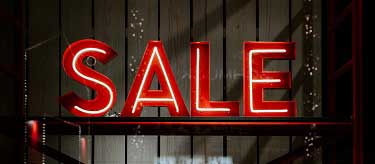Money Hacks: how marketers use the anchoring effect to get you to spend more
Money Hacks is a series exploring Behavioural Economics concepts, illustrating how unconscious biases influence the decisions we make with money. By understanding these biases and learning to avoid them, we can spend smarter, save more, and make better financial decisions overall.
Imagine you’re out shopping for a new car. You’ve chosen what kind you want and decide to go for it. You see that the Manufacturers Suggested Retail Price (MSRP) is $34,999 and you head into the sales office, ready for a tough negotiation. You’re offered a $500 discount, but you stick to your guns and ask for more. The salesperson leaves to “talk to their manager” and comes back with a new offer - $1,000 off the MRSP. You feel good about negotiating a better price, and you accept the offer.
Did you really get a good deal, though? Well, you got a 3% discount – so it seems like it. But there’s a good chance you paid more than you had to, due to the anchoring effect.
What is the anchoring effect?
The anchoring effect is where an initial exposure to a number serves as a reference point and influences our subsequent judgments. In other words, our judgement is influenced by the first number we see. In the example above, the MSRP serves as the anchor. And our judgement about whether we’re getting a good deal is based on the price we get relative to that anchor.
But what if we used a different anchor? What if, before we started negotiation, we learned that, on average, people paid $32,000 for this car? What if we knew that the dealer paid only $28,000 for this car? If we start with a different anchor, our assessment of what’s a fair price may be quite different. And we may negotiate a bit harder or feel more confident walking away.
What if I’m not buying a car?
Buying a car is one example of the anchoring effect. But it’s by no means the most common. Any time you’re out shopping – whether online or in person – you’ll come across items that are “on sale”. In most cases, the “on sale” message also references the original price. It may state the original price ($500 Now $300!). Or it may tell you what discount you’re getting (50% off!).
The messaging references the original price for one reason – to serve as an anchor. The anchor makes the original price seem “normal.” Once your perception of a “fair price” has been anchored in this way, the discounted price becomes much more appealing. And you’re more likely to make the purchase.
How can I avoid being anchored?
There are a couple of things you can do to reduce the effects of anchoring:
- Plan your purchases: anchoring can lead to impulse purchases. If you hadn’t planned to buy an item until you saw the sale price, step away and think about it for a day or two. You may discover there are other things you’d rather spend your money on.
- Do your research: information is the best defence against the anchoring effect. Before you buy something, do some research to see if the price is as good as it appears.
Watch out for anchors next time you’re shopping. Just because something is on sale doesn’t mean it’s a good deal.


